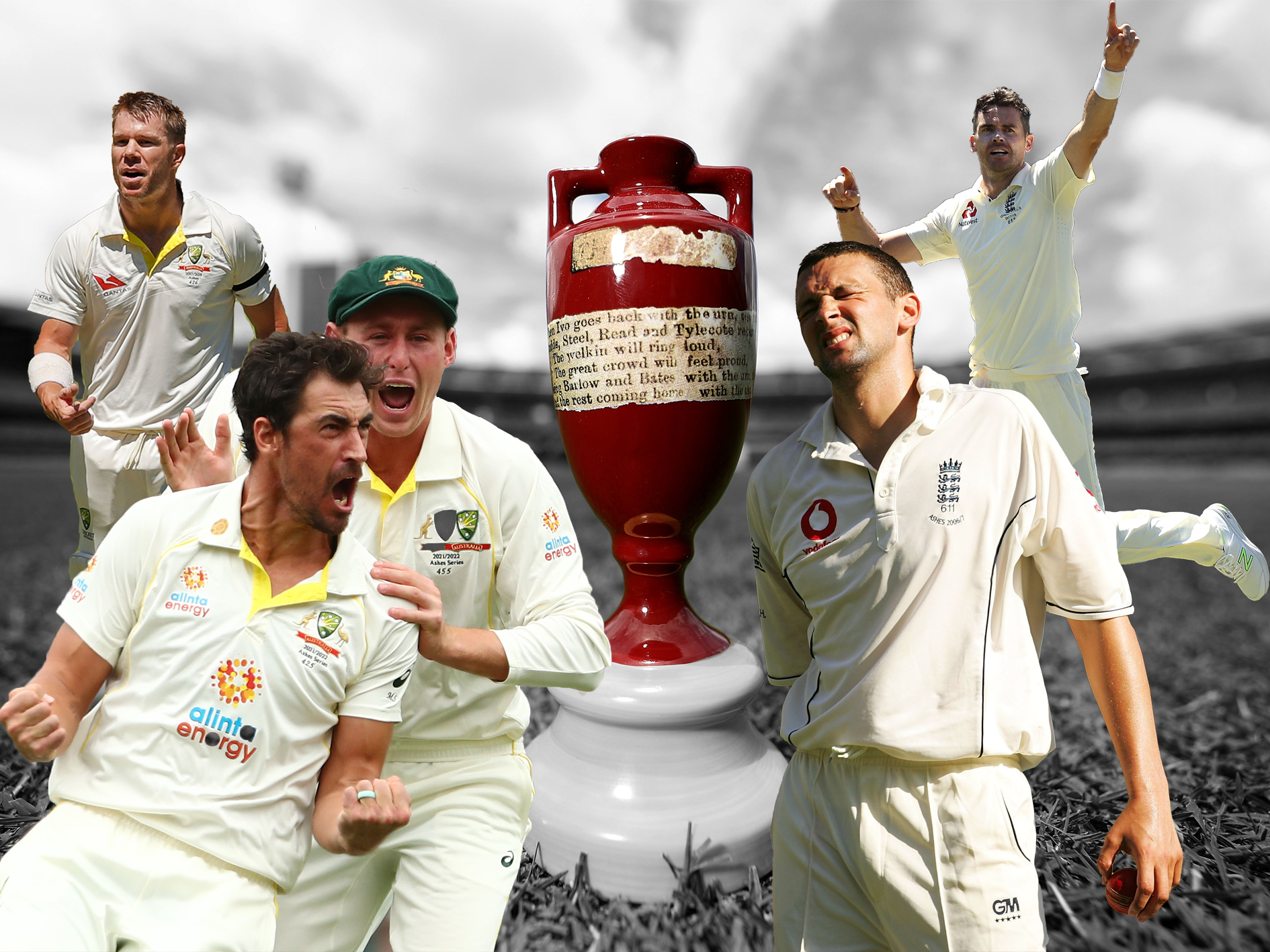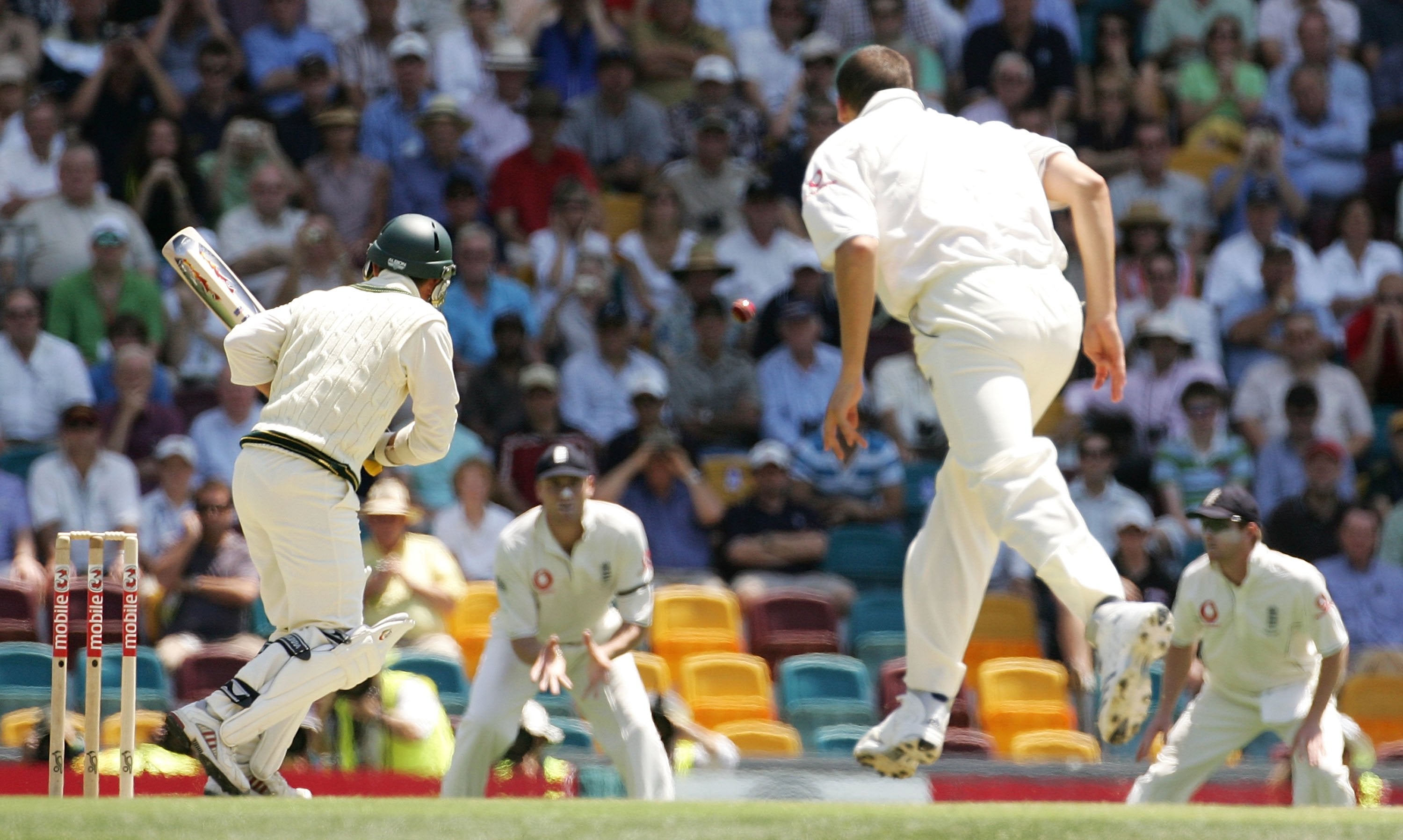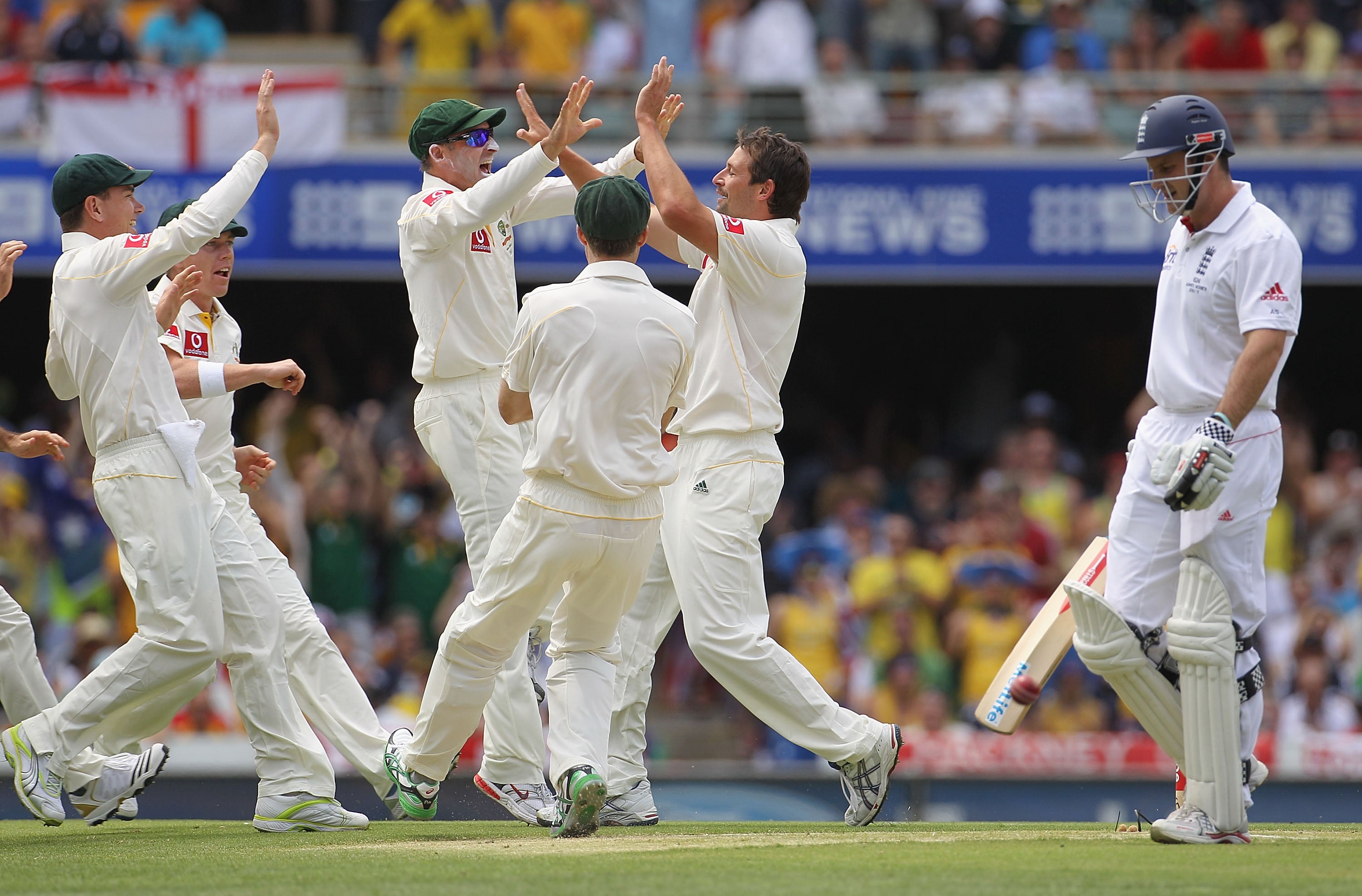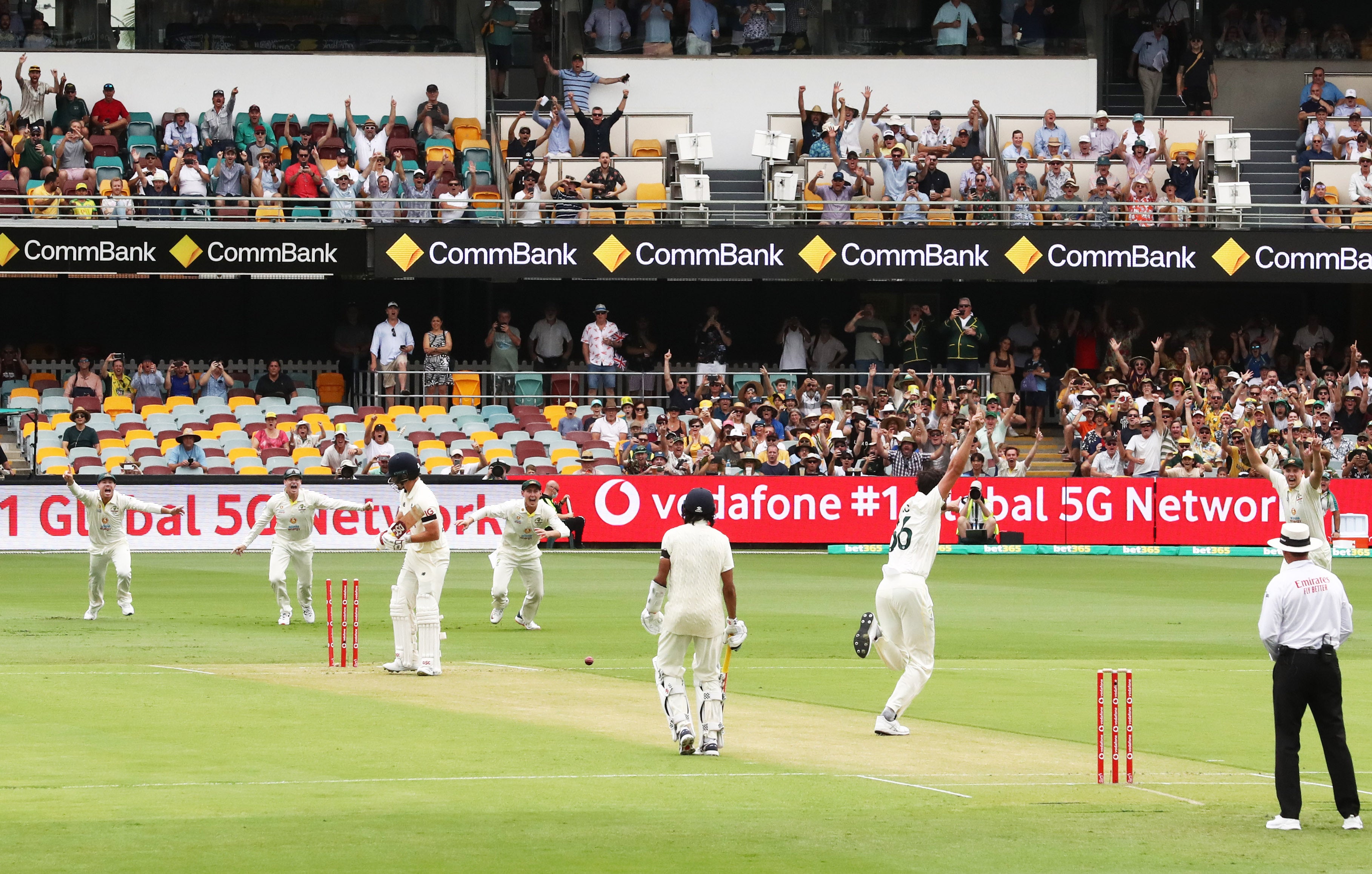Why the Ashes’ first ball could be the most important of all
The first ball of the series between England and Australia has earned its own mythology down the years – so does it really set the tone for what’s to come?

Steve Harmison stood at the top of his mark, all alone. It is a naked place, preparing to bowl the first ball of a most-likely doomed Ashes series in a bearpit like the Gabba, surrounded by a wall of 40,000 rabid Brisbanites who do not wish you well and are letting you know about it.
As he ran towards the crease the noise grew louder. Harmison has tried many times to explain what happened next, why the ball flew diagonally out of his grasp, skidded off the wicket and ended up in the lap of captain Andrew Flintoff at second slip. “I froze,” he said at the time. “My whole body was nervous. I could not get my hands to stop sweating. The first ball slipped out of my hand, the second did as well and, after that, I had no rhythm, nothing.”
Having stewed on that moment in December 2006 for more than a decade, he said in 2017: “I was trying far too hard to bowl too fast. Did I freeze? Possibly. I just think I tried too hard.”

It is something unique in Test cricket before that first ball is bowled – the wait. The batsman shuffles on his crease, the wicketkeeper claps his gloves, the umpire straightens his hat. The morning sun has just emerged over the stadium’s rim and it feels like the start of something, something that may be magical or dramatic or destructive – no one yet knows what, but it will definitely be something. After all the build-up, the world slows down in those last few seconds before an Ashes series finally begins. And perhaps the ability of a front-line bowler or opening batter to handle that moment can ripple across the grass and take hold of a team.
Harmison’s famous wide has long been credited with “setting the tone” for what was to come: England meekly surrendering the Ashes in a 5-0 whitewash. But does the first ball of the series really indicate – even influence – what follows?
Most opening balls down the years have been uneventful, offering little in the way of a forecast, but there have been some memorable moments. In 1994, Michael Slater bludgeoned England’s stand-in fast bowler Phil DeFreitas’s first delivery to the Gabba boundary, then proceeded to rack up a merciless 176. Needless to say, Australia won the series.
“I suppose DeFreitas being cut for four first ball did set the tone,” Phil Tufnell later reflected. “At the time it really didn’t feel like the end of the world. We just thought: ‘Oh right, that’s gone for four, next ball.’ There wasn’t a groan around the fielders or anything. It’s only looking back you can see that it was one of those moments.”
In the previous Ashes before his infamous wide, Harmison had opened the 2005 series with a fierce over of pace and bounce at Lord’s. The first ball whistled between Justin Langer’s off-stump and his nose, and the second crashed into the batsman’s arm. Yet England lost that Test convincingly, and it was only later that they rallied to eventual victory.
Then there was 2010, when Australian bowler Ben Hilfenhaus served up a loose opener in Brisbane which Andrew Strauss comfortably let by. Strauss’s control of the situation was mirrored by England’s performance as they clinched a 3-1 victory and won their first Ashes on Australian soil for 24 years. Yet that first delivery was no omen: Strauss was out two balls later, caught behind for a duck.

Langer certainly believed Harmison’s wide ball in 2006 was more significant than the value of one Australian run, after which “England’s body language seemed flat and even a little intimidated”.
“To be perfectly truthful, I felt let down after that first ball,” Langer said. “It was such a comedown after Lord’s in 2005, where I remember the ball flying past my nose to Geraint Jones. I looked around and England were looking at their toes. It was just a huge letdown and that first ball was really key.”
Harmison rejects that idea. “That ball in Brisbane on the 2006-07 Ashes tour didn’t set the tone,” he wrote in his book, Speed Demons. “We weren’t good enough to beat Australia, whether that first ball of the series happened or not.”
Perhaps “setting the tone” is just an easy verdict with hindsight. What the first ball can do is solidify a feeling already in the air. Australia were overwhelming favourites when England turned up in Brisbane again in 2021, and that sense of inevitability was quickly reinforced. Mitchell Starc started the series with an 88mph swinger which wrapped around Rory Burns’ legs and clattered the stumps. The “Gabbatoir” had another first-ball victim. Burns’ Test career never recovered, and neither did England, losing the match by nine wickets and the series 4-0.

Zak Crawley embodied the spirit of Bazball when he stood up to Pat Cummins’ opening delivery at Edgbaston two years ago, nonchalantly crashing the ball through the covers for four. England lost the Test and drew the series, but Crawley’s boundary signalled to Australia that they were not going to veer from their commitment to Brendon McCullum’s full-throttle cricket.
Crawley later explained to The Times that he had “always been a big fan of the first ball of the Ashes,” as if it was a sport in itself. “I’ve been watching it since growing up and I knew a couple of weeks out that if we won the toss there would be a good chance of facing it. I chatted to Brooky [Harry Brook] about it when we were golfing in Scotland – that it would be cool if I could get the first one away and make a statement.”
That was the last “first ball”. The next one, in Perth on Friday, could perhaps be Mitchell Starc to Crawley, or (more likely, given Ben Stokes’ preference to bowl first and chase) Jofra Archer or Gus Atkinson to Usman Khawaja. Whatever happens may just signpost what’s to come this series.
England would do well to be wary – they have generally been on the wrong end of most dramatic Ashes starts, and McCullum knows the consequences of going hard early. He tried to knock out the floodlights at the start of the 2015 World Cup final, only to swing and miss, handing over New Zealand’s most prized wicket. The bowler that day was Starc, and Australia never looked back.
Join our commenting forum
Join thought-provoking conversations, follow other Independent readers and see their replies
Comments
Bookmark popover
Removed from bookmarks